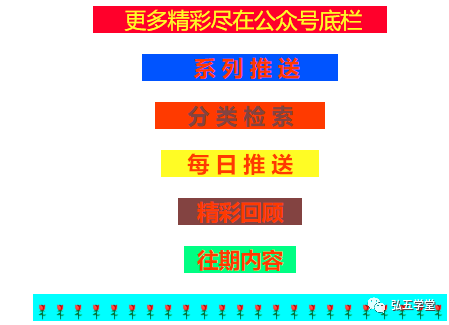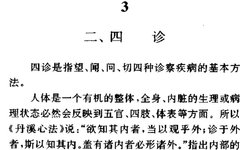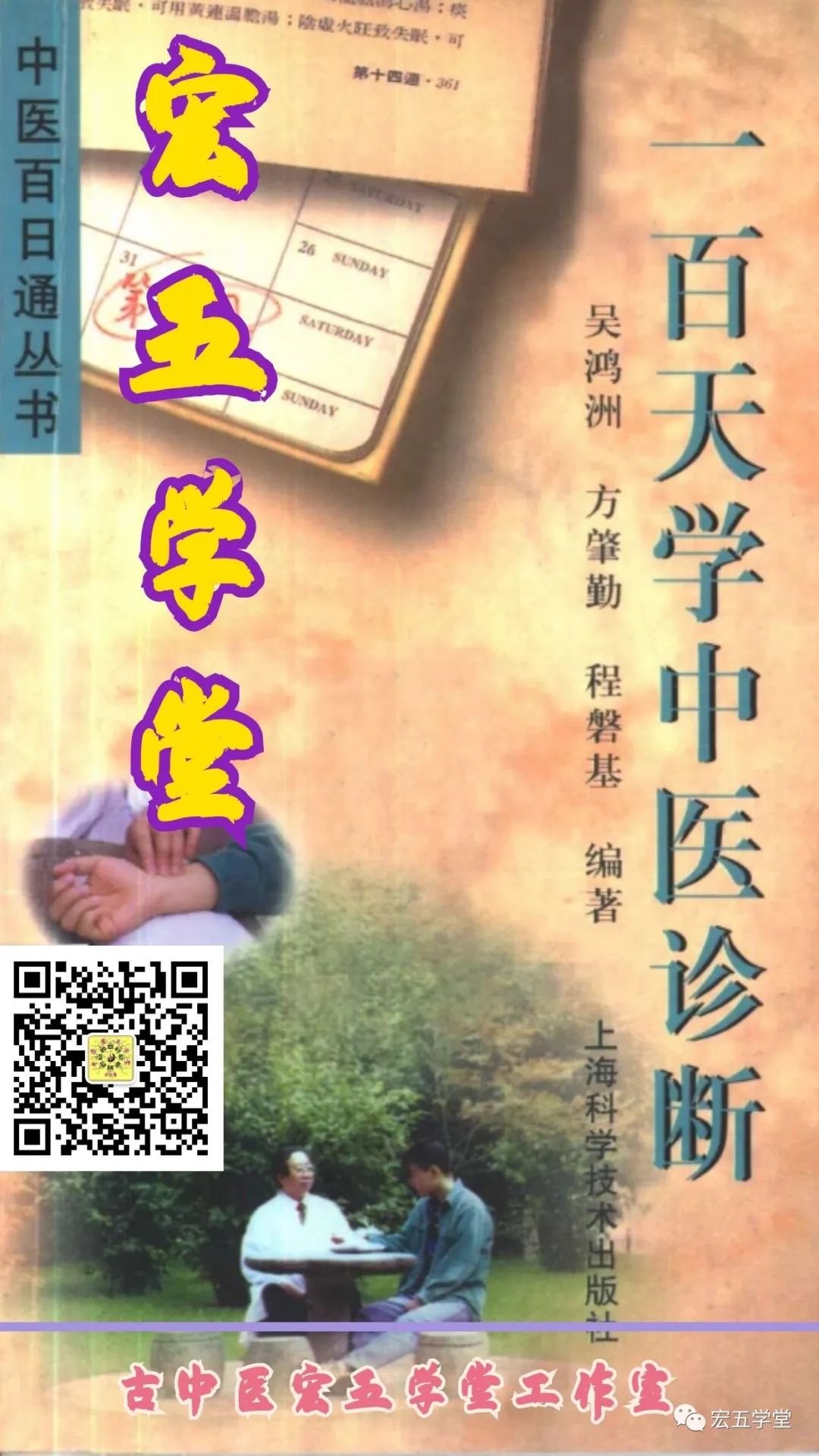
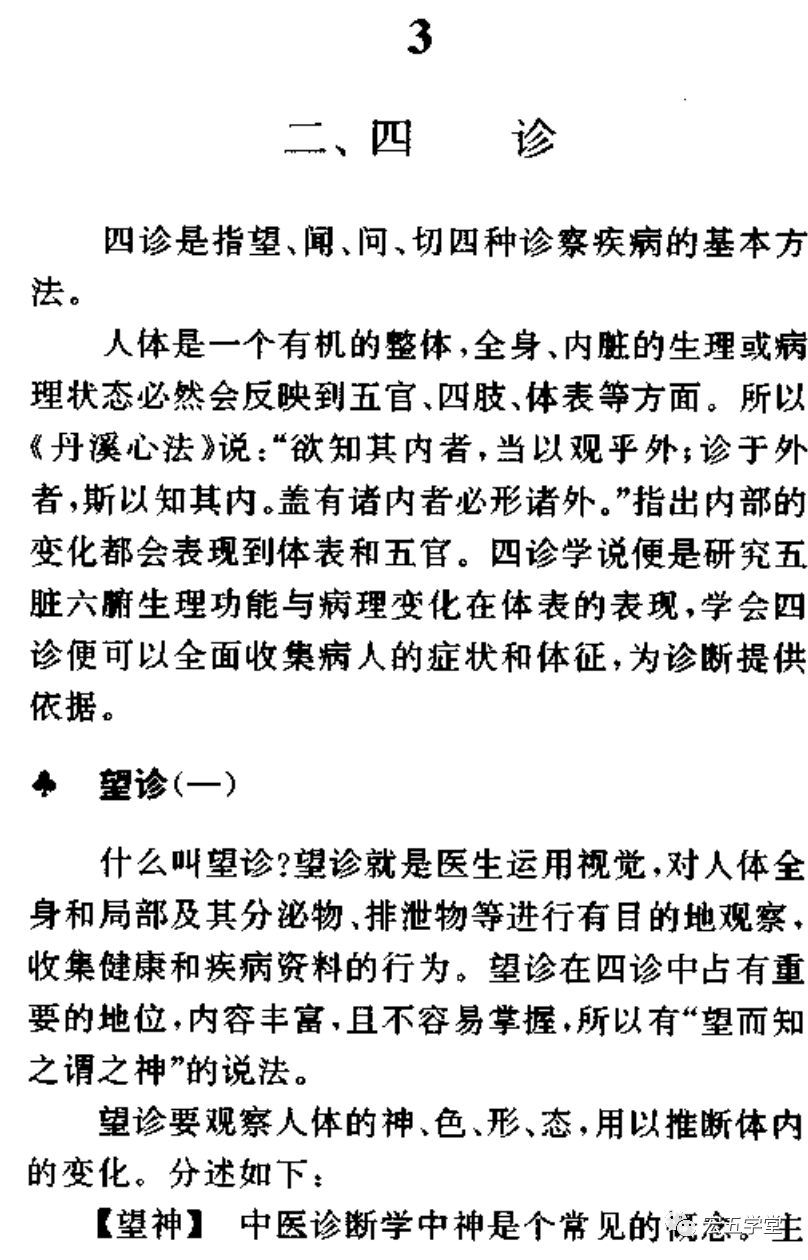
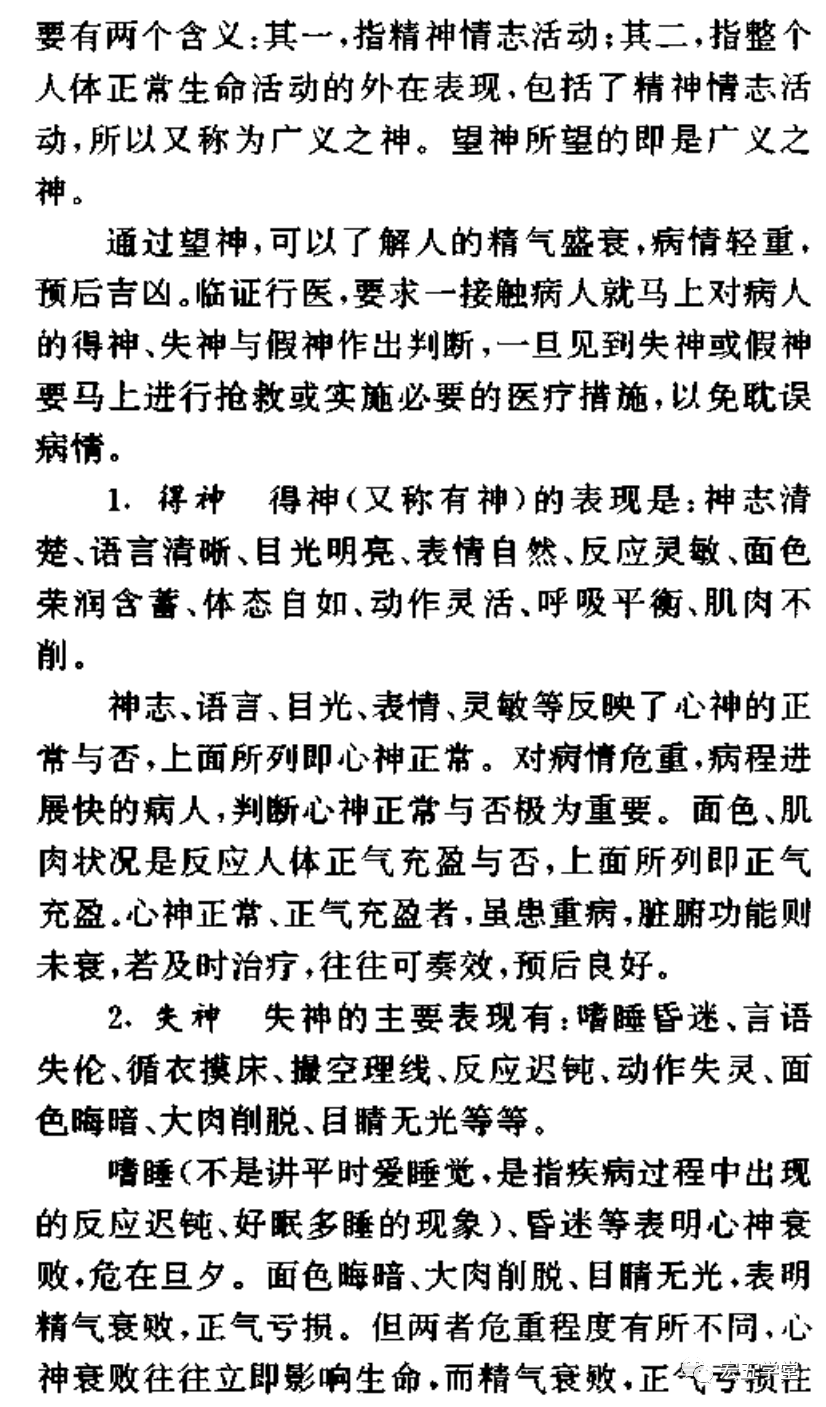
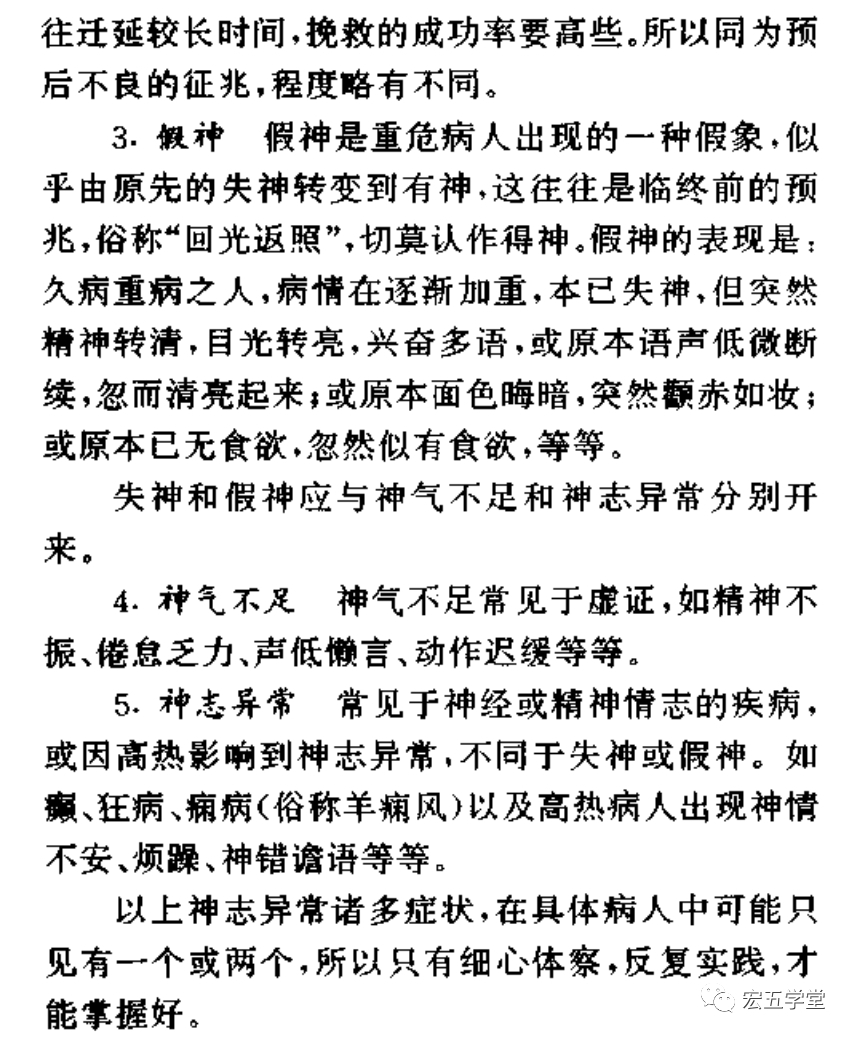
II. The Four Diagnostic Methods
The Four Diagnostic Methods refer to the basic techniques of observing, listening, questioning, and palpation used to diagnose diseases.
The human body is an organic whole, and the physiological or pathological state of the entire body and internal organs will inevitably reflect on the five senses, limbs, and surface of the body. Therefore, the “Danxi Heart Method” states: “To know the internal, one must observe the external; to diagnose externally is to understand the internal. Changes within will manifest externally.” This indicates that internal changes will be expressed on the body surface and the five senses. The theory of the Four Diagnostics studies the physiological functions and pathological changes of the internal organs as they are reflected on the body surface. Mastering the Four Diagnostics allows for comprehensive collection of patient symptoms and signs, providing a basis for diagnosis.
◆ Observation (Wang Zhen) (1)
What is observation? Observation is the act of the physician using vision to purposefully observe the entire body and its local areas, as well as secretions and excretions, to collect information on health and disease. Observation holds an important position among the Four Diagnostics, with rich content that is not easy to master, hence the saying “to know by observation is called spirit”.
Observation requires examining the spirit, color, shape, and state of the body to infer internal changes. The details are as follows:
【Observation of Spirit (Wang Shen)】
In TCM diagnostics, the concept of spirit is common. It has two main meanings: one refers to the activities of the mind and emotions; the other refers to the external manifestations of the body’s vital activities, which include mental and emotional activities, thus it is also called the broad sense of spirit. The observation of spirit focuses on this broad sense of spirit.
Through the observation of spirit, one can understand the vitality of a person, the severity of the illness, and the prognosis. In clinical practice, it is required that upon first contact with the patient, the physician immediately assesses the patient’s spirit, loss of spirit, and false spirit. Upon seeing loss of spirit or false spirit, immediate rescue or necessary medical measures should be taken to avoid delaying treatment.
-
1. Presence of Spirit (De Shen)The presence of spirit (also known as having spirit) is characterized by: clear consciousness, coherent speech, bright eyes, natural expression, quick response, rosy complexion, relaxed posture, agile movements, balanced breathing, and well-toned muscles. The state of consciousness, speech, gaze, expression, and responsiveness reflect the normalcy of the heart spirit; the above characteristics indicate a normal heart spirit. For patients in critical condition with rapidly progressing illness, assessing the normalcy of the heart spirit is extremely important. The complexion and muscle condition reflect whether the body’s righteous qi is abundant; the above characteristics indicate abundant righteous qi. A normal heart spirit and abundant righteous qi indicate that even with severe illness, the functions of the internal organs have not declined, and timely treatment can often yield effective results with a good prognosis.
2. Loss of Spirit (Shi Shen)The main manifestations of loss of spirit include: drowsiness and coma, incoherent speech, groping for clothes and bed, grasping at empty air, slow response, impaired movements, dark complexion, emaciation, and lack of luster in the eyes, etc.
Drowsiness (not to be confused with a general tendency to sleep) refers to a state of sluggishness and excessive sleep during the course of illness, while coma indicates a critical state of heart spirit decline. A dark complexion, emaciation, and lack of luster in the eyes indicate a decline in vital energy and a deficiency of righteous qi. However, the severity of these two conditions differs; heart spirit decline often immediately threatens life, while decline in vital energy and deficiency of righteous qi may take longer to develop, thus the success rate of rescue is higher. Therefore, while both are signs of poor prognosis, the degree of severity varies slightly.
3. False Spirit (Jia Shen)False spirit is a phenomenon seen in critically ill patients, where there appears to be a transition from loss of spirit to presence of spirit. This is often a premonition of impending death, commonly referred to as “return of light”; it should not be mistaken for presence of spirit. The manifestations of false spirit include: in patients with prolonged severe illness, as the condition worsens, they may suddenly appear more alert, with bright eyes, increased talkativeness, or their previously low and intermittent speech may suddenly become clear; or their previously dark complexion may suddenly appear flushed; or they may suddenly show signs of appetite after having none, etc.
Loss of spirit and false spirit should be distinguished from insufficient spirit and abnormal consciousness.
4. Insufficient Spirit (Shen Qi Bu Zu)Insufficient spirit is commonly seen in deficiency patterns, such as lack of energy, fatigue, low voice, reluctance to speak, and slow movements, etc.
5. Abnormal Consciousness (Shen Zhi Yi Chang)Abnormal consciousness is commonly seen in neurological or psychological disorders, or due to high fever affecting consciousness, which is different from loss of spirit or false spirit. Examples include epilepsy, mania, and high fever patients exhibiting restlessness, irritability, and delirium, etc.
Among the various symptoms of abnormal consciousness, only one or two may be observed in specific patients, so careful observation and repeated practice are necessary to master these concepts.

Related Links
《百日学中医诊断》1.1 Introduction to TCM Diagnostics and Its Main Content《百日学中医诊断》1.2 Importance of Learning TCM Diagnostics《百日学中医诊断》1.3 Characteristics and Principles of TCM Diagnostics《百日学中医诊断》1.4 Methods of Learning TCM Diagnostics
